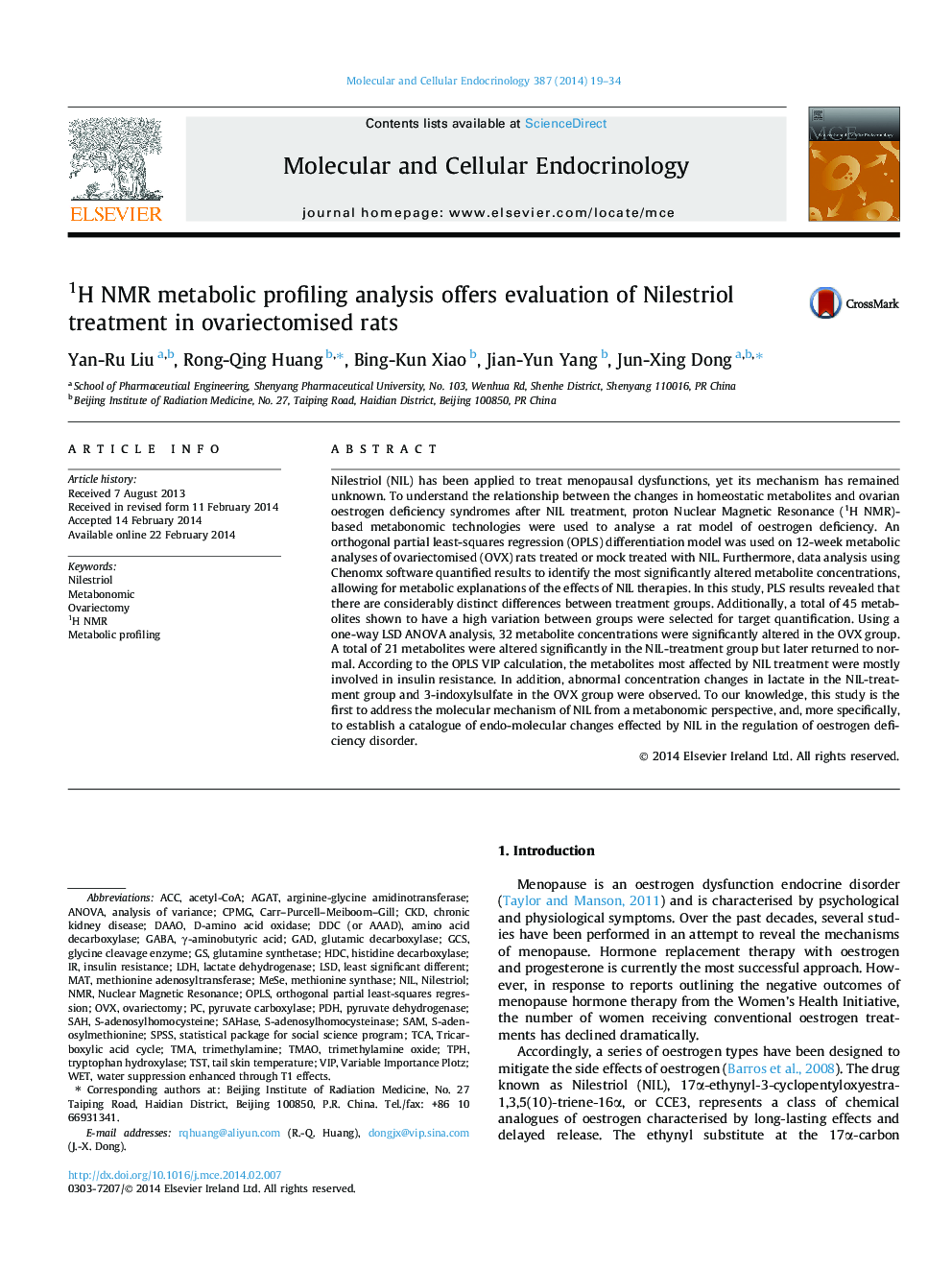| کد مقاله | کد نشریه | سال انتشار | مقاله انگلیسی | نسخه تمام متن |
|---|---|---|---|---|
| 2196108 | 1550891 | 2014 | 16 صفحه PDF | دانلود رایگان |

• The molecular mechanism of Nilestriol is addressed using metabonomic techniques.
• Some metabolite concentrations recover to control levels during treatment with Nilestriol.
• OVX-induced abnormal metabolite concentrations are associated with insulin resistance.
• 3-Indoxylsulfate was identified as a biomarker in OVX rats with nephrovascular disorder.
• High lactate levels in Nilestriol-treated animals is associated with breast cancer risk.
Nilestriol (NIL) has been applied to treat menopausal dysfunctions, yet its mechanism has remained unknown. To understand the relationship between the changes in homeostatic metabolites and ovarian oestrogen deficiency syndromes after NIL treatment, proton Nuclear Magnetic Resonance (1H NMR)-based metabonomic technologies were used to analyse a rat model of oestrogen deficiency. An orthogonal partial least-squares regression (OPLS) differentiation model was used on 12-week metabolic analyses of ovariectomised (OVX) rats treated or mock treated with NIL. Furthermore, data analysis using Chenomx software quantified results to identify the most significantly altered metabolite concentrations, allowing for metabolic explanations of the effects of NIL therapies. In this study, PLS results revealed that there are considerably distinct differences between treatment groups. Additionally, a total of 45 metabolites shown to have a high variation between groups were selected for target quantification. Using a one-way LSD ANOVA analysis, 32 metabolite concentrations were significantly altered in the OVX group. A total of 21 metabolites were altered significantly in the NIL-treatment group but later returned to normal. According to the OPLS VIP calculation, the metabolites most affected by NIL treatment were mostly involved in insulin resistance. In addition, abnormal concentration changes in lactate in the NIL-treatment group and 3-indoxylsulfate in the OVX group were observed. To our knowledge, this study is the first to address the molecular mechanism of NIL from a metabonomic perspective, and, more specifically, to establish a catalogue of endo-molecular changes effected by NIL in the regulation of oestrogen deficiency disorder.
Figure optionsDownload high-quality image (273 K)Download as PowerPoint slide
Journal: Molecular and Cellular Endocrinology - Volume 387, Issues 1–2, 25 April 2014, Pages 19–34